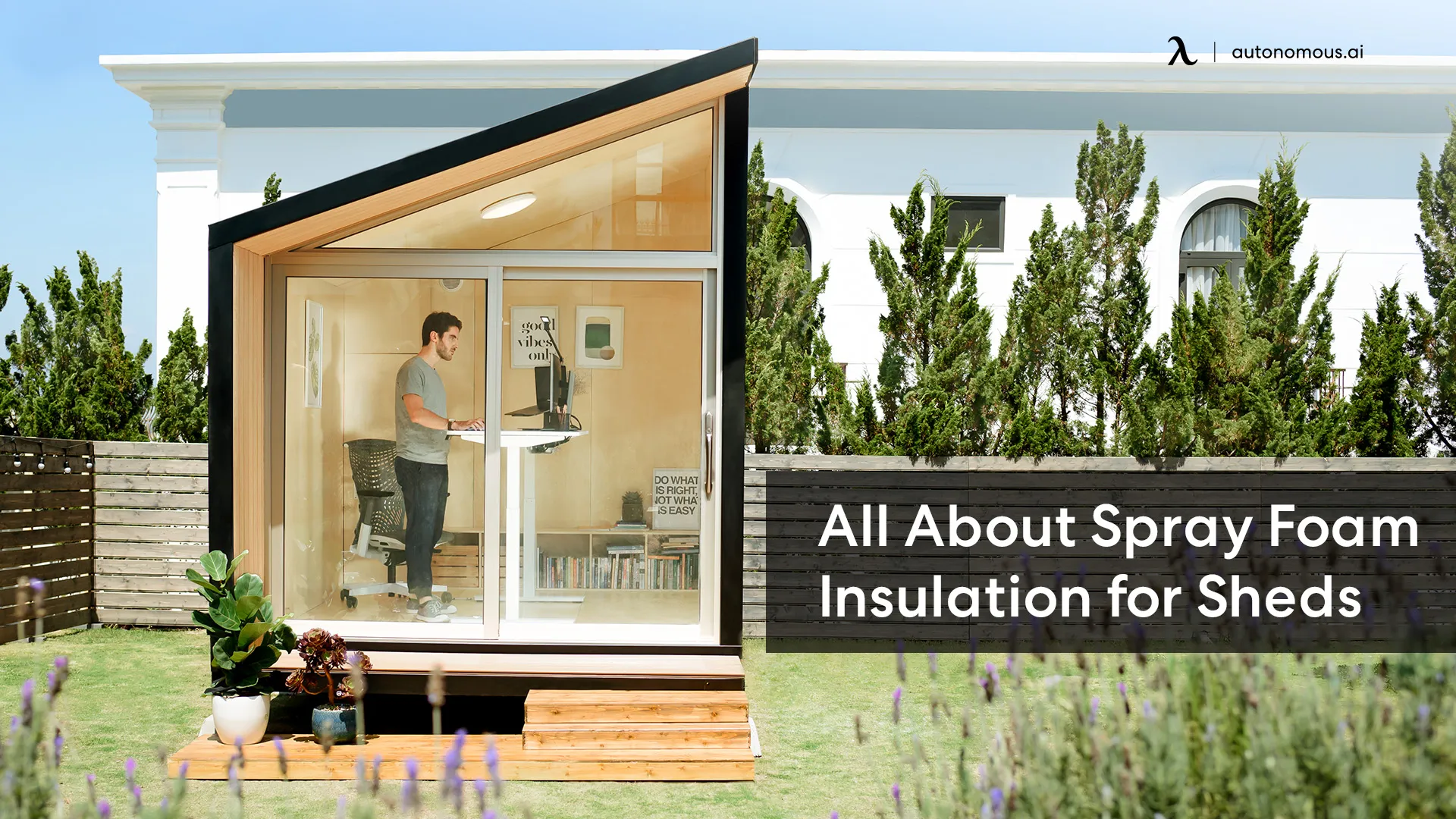
Should You Use Spray Foam Insulation for Your Shed?
Table of Contents
Before you buy spray foam insulation for your shed or prefab accessory dwelling unit (ADU), learning more about the product is important. In this article, we will go over what it is, the benefits of spray foam insulation, and its health risks.
Read until the end, as we will also answer a few frequently asked questions about the product. Let's get started!
What Is Spray Foam Insulation?
Spray polyurethane foam (SPF) is a composite material that many homeowners use to insulate their homes. It's made from isocyanate and polyol resin, which expands 30 times greater than its liquid volume.
The interesting thing about spray foam is that the two materials are stored in different tanks and transported to the tip of the spray gun using gas pressure or liquid.
When isocyanate and polyol resin meet, they react and transform into a foam solution. Upon drying up, it becomes an effective air and vapor barrier.
Homeowners can use spray foam insulation for soundproofing their sheds, as it helps to seal the gaps, cavities, and crawl spaces. The "cells," also called pockets, in a spray foam create tiny air pockets, making it difficult for heat or sound to pass through them. These characteristics make it a highly effective insulator.
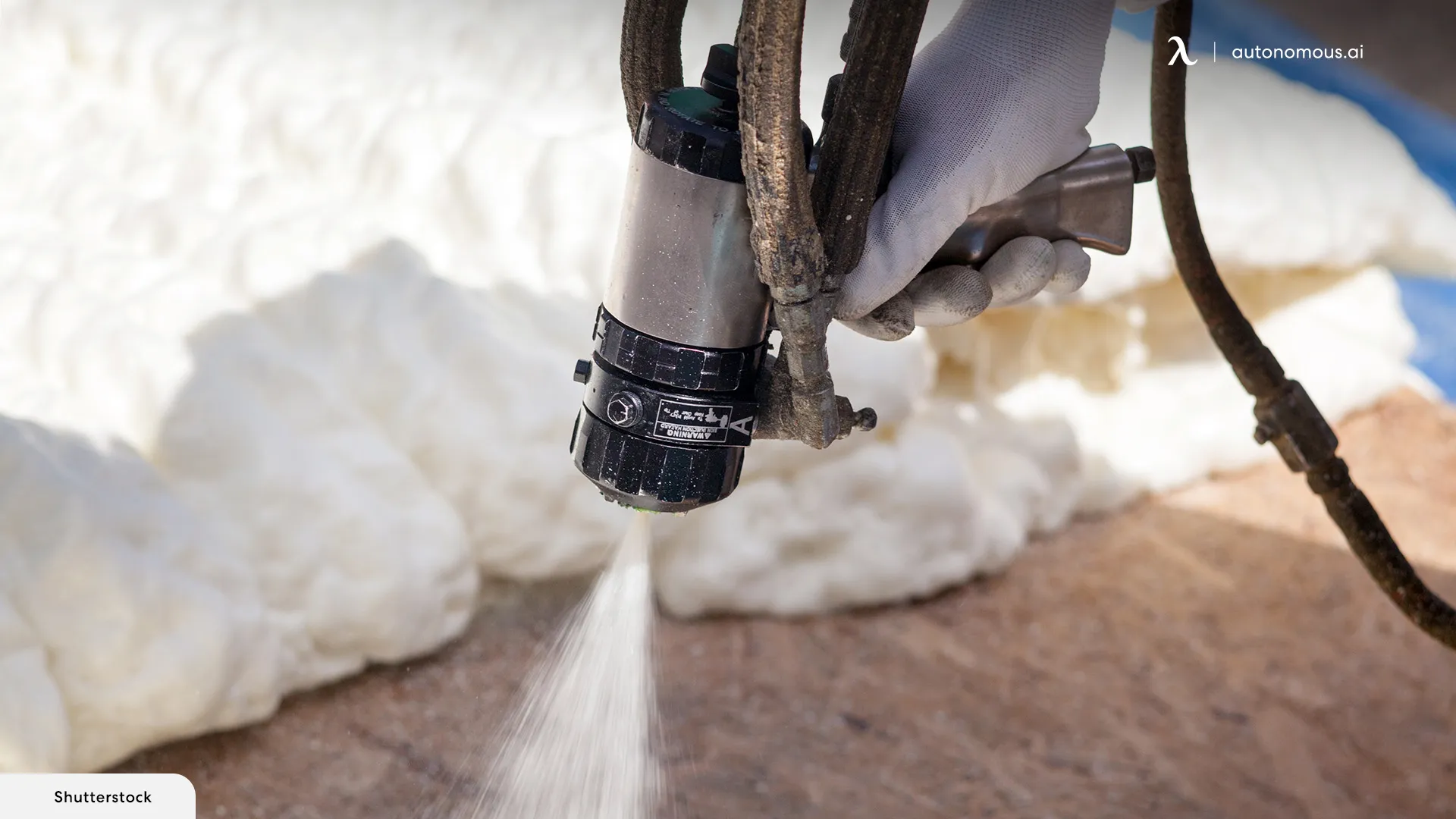
Types of Spray Foam Insulation
There are two types of spray foam insulation for soundproofing your shed, and these include the following:
Open-cell Spray Foam
Open-cell spray foam has small cells that aren't enclosed. It uses carbon dioxide or water as a propelling agent to push the two materials out of the tanks. Once the foam dries up, it becomes a soft and flexible insulation.
Compared to its closed-cell counterpart, the open-cell spray foam insulation is less harmful to the environment. Homeowners can use it on their sheds' walls, ceilings, and roofs to create an effective air and sound barrier.
Since it is more likely to absorb moisture, there may be a need for an additional vapor barrier. It has an R-value between 3.5 and 3.6 per inch. However, it is inefficient, as it expands to only three inches, meaning you would need to apply additional coats. This results in excess foam wastage.
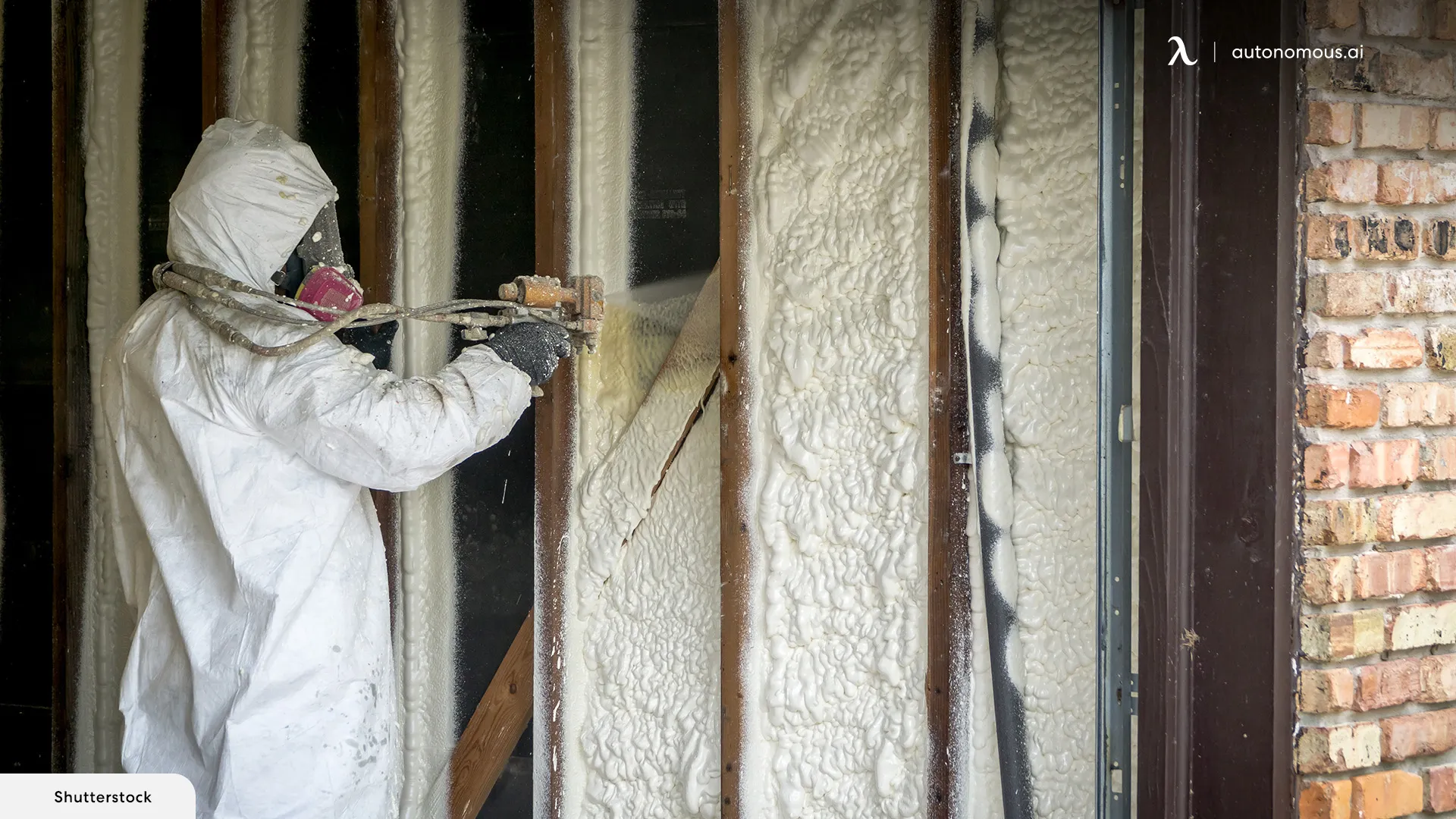
Closed-cell Spray Foam
The individual pockets are densely packed and completely closed in closed-cell spray foam. This makes the sound and air barrier more rigid, and in some cases, it can even improve structural integrity.
A closed-cell spray foam insulation is much more effective against vapor due to the enclosed cells. A single inch of foam provides up to R-6.5 of insulation, a much greater value than its open-cell counterpart.
However, closed-cell spray foam is much more harmful to the environment, as it uses hydrofluorocarbons as the propelling agent. It is a greenhouse gas that is a hundred times more dangerous than carbon dioxide, and emitting them can contribute to global warming.
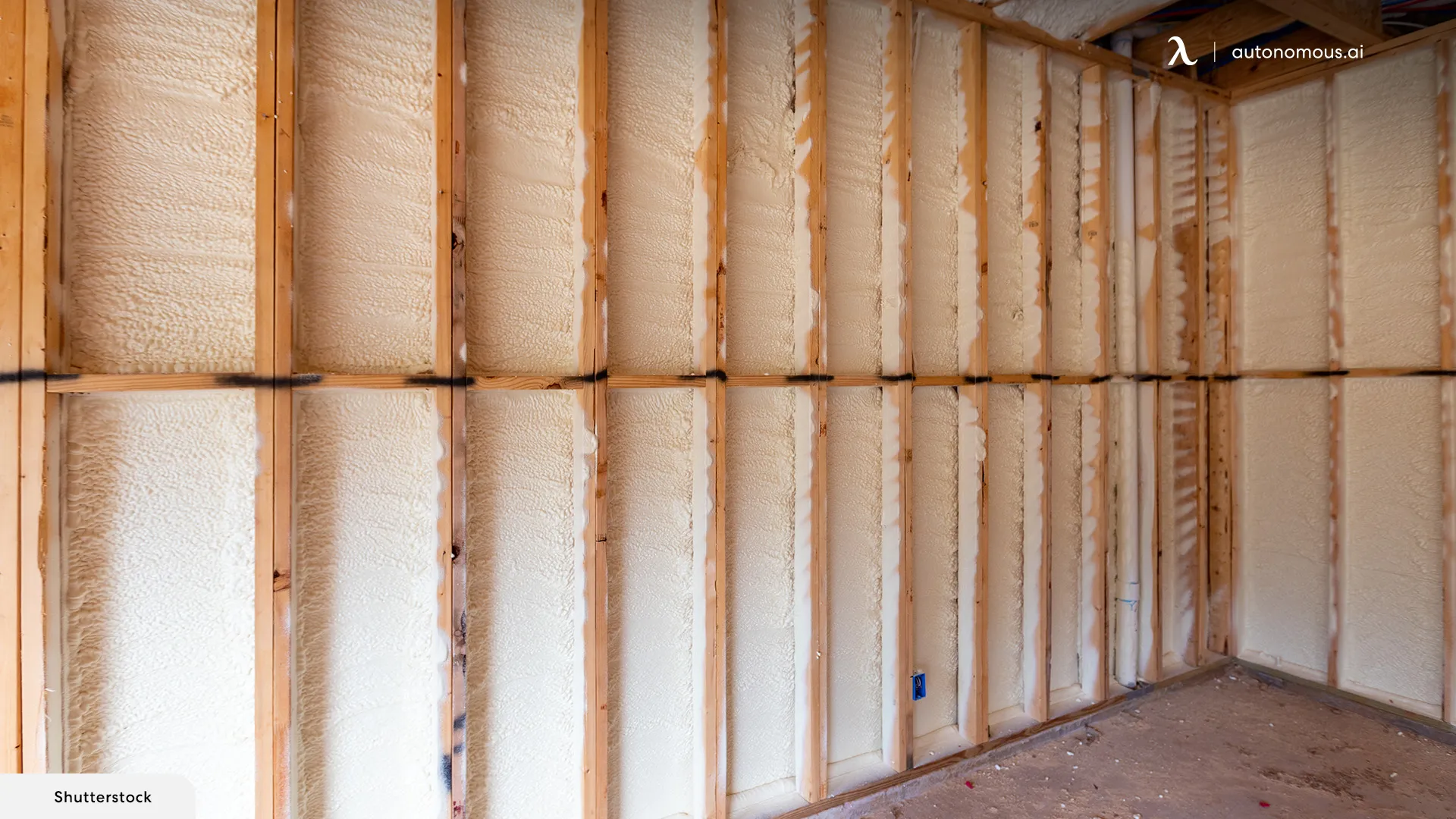
Pros and Cons of Spray Foam Insulation
Spray foam insulation is a building material. Like others, it has its fair share of benefits and drawbacks. Before you buy spray foam insulation, it's important that you know the pros and cons.
Pros of Spray Foam Insulation
Below are some of the spray foam insulation benefits:
Excellent Coverage
Spray foam offers better insulation than other materials, such as fiberglass batts or rigid foam, as it expands in place.
By simply pointing the spray gun at a gap or crawl space in your shed and squeezing the trigger, homeowners can easily spray the foam, allowing it to expand and cover the entire area.
Long-lasting
Unlike spray-in insulation or batts, spray foam insulation lasts longer and does not degrade. When spread, the material is sticky, allowing it to stick to walls, ceilings, plywood sheathing, and other surfaces before expanding and becoming hard. This creates a strong bond.
High R-value
Spray foam insulation offers better air and vapor barrier than other types of insulation due to the enclosed cells and the expanding nature of the material.
Air and Vapor Barrier in One
A closed-cell spray foam insulation offers two types of barriers that prevent air and vapors from getting inside the house. This makes it easy for homeowners, as they don't have to apply additional coats over the dried foam.
You Can DIY
Unlike many other insulation materials that require skills and expertise to apply, spray foam insulation comes in DIY kits. Homeowners can purchase these from their nearest home improvement stores to insulate their sheds.
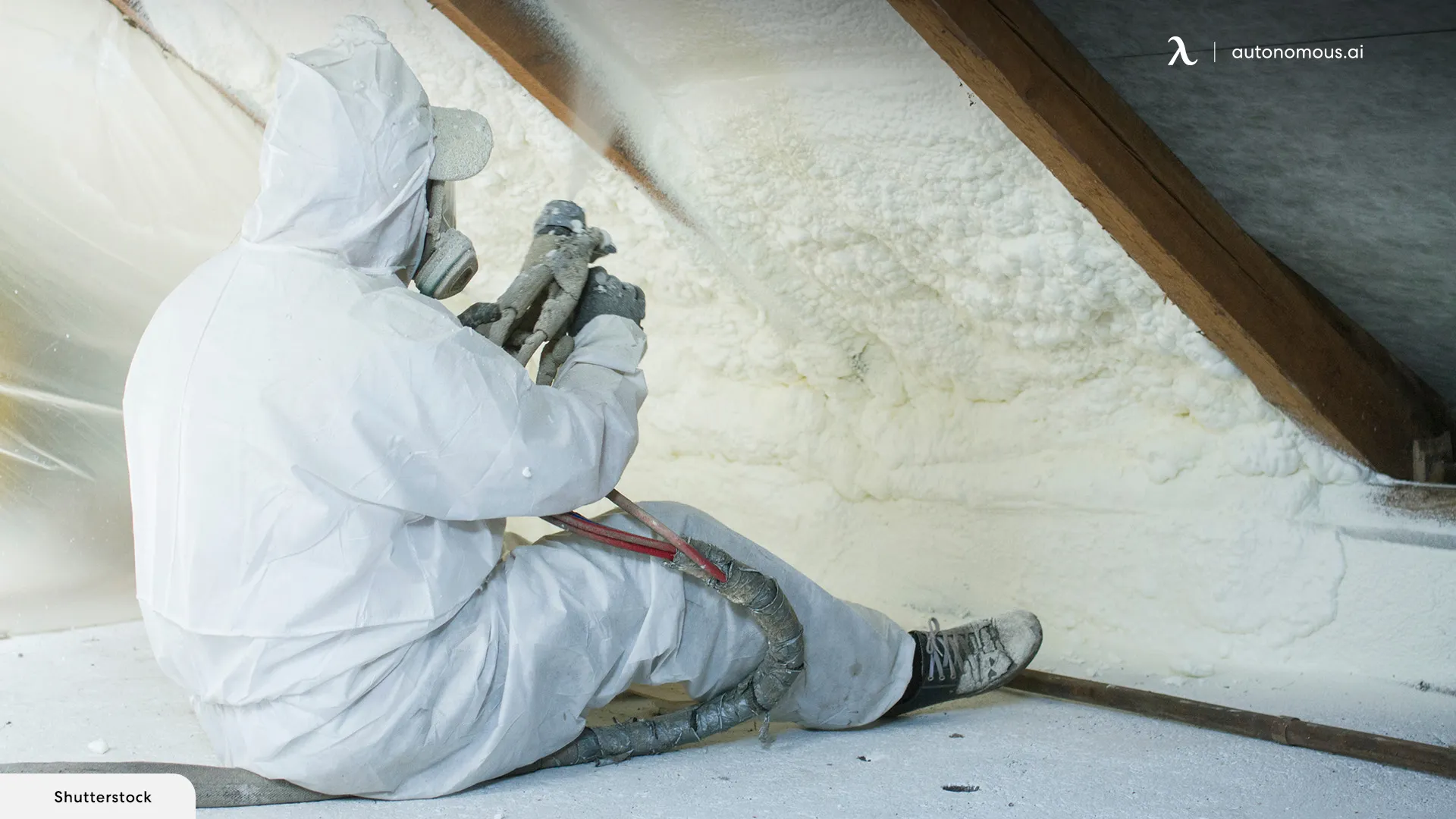
Cons of Spray Foam Insulation
The following are the drawbacks (cons) of using spray foam insulation in your home:
Expensive
The closed-cell spray foam insulation is the most expensive insulating material to insulate your home or shed.
Many homeowners still prefer these types of building materials, as their durability and energy savings offset the initial installation costs.
Messy
When wet, the foam is extremely sticky, making it challenging to apply without getting messy. Since it can get you dirty, it's best to wear personal protective equipment.
Long Dry Time
It can take several days for the foam to cure and dry. During this time, wet foam can release an unpleasant odor, making it difficult to be around the structure.
What Are the Common Problems with Spray Foam Insulation?
Besides the drawbacks mentioned above, there are a few common problems associated with spray foam insulation, some of which include the following:
It Can Lead to Mold
Since closed-cell insulation is extremely rigid, and if applied improperly, there can be gaps between the foam and the structure. This can cause moisture to seep through, becoming a breeding ground for mold to grow. In most cases, the mold in your shed can go unnoticed until it becomes a huge problem.
It Releases a Bad Odor
Improper ratios of the mixture can lead to the chemicals reacting with each other and releasing a foul odor, which can be unbearable. This can prevent homeowners from using the shed for months due to the bad smell.
It Can Lead to Termite Damage
Improper application of spray foam insulation can cause the material to hide sills and joists. This can prevent home inspectors from detecting any termites, which can lead to damage in the long run.
It Can Be Airtight
Although making a shed airtight with spray foam insulation can have several advantages, it can lead to severe problems, such as superheating, carbon monoxide poisoning, and roof damage, if it doesn't have a working ventilation system.
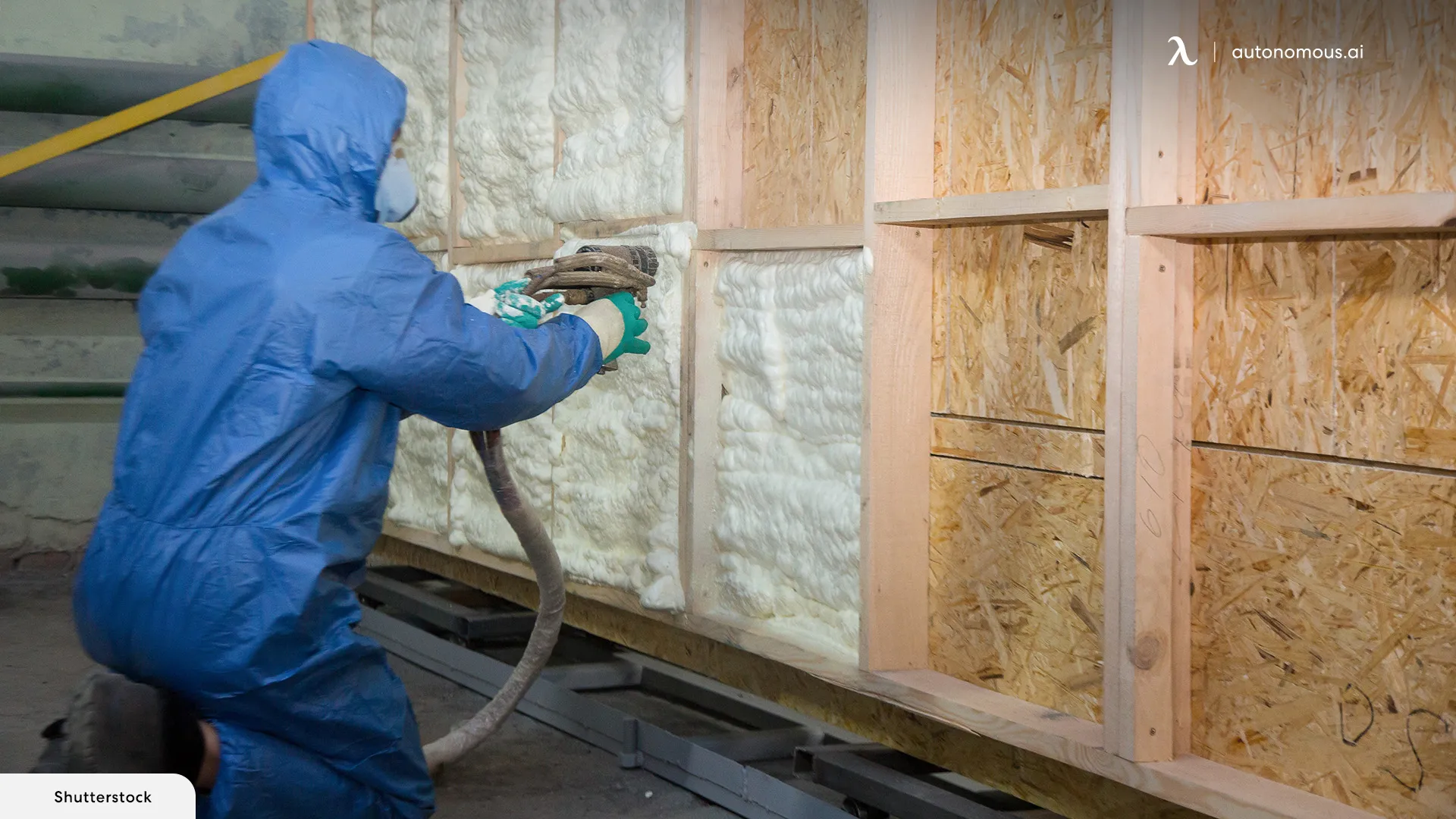
What Are the Health Risks Associated with Spray Foam Insulation?
According to the United States Environmental Protection Agency (EPA), there are certain health risks associated with using isocyanates. These highly reactive chemicals may cause skin irritation, lung problems, inflammation, work-related asthma, dermatitis, and sensitization, among many others.
The EPA also states that the polyol blend in a spray foam insulation carries medical risks, such as sensitization, visual problems (blurriness), and irritation upon contact.
With all the problems and health risks associated with using spray foam insulation in your shed, it's best to invest in a prefab ADU.
Although you'll have to bear the initial tiny house cost to replace the existing shed, it has many benefits, such as multi-purpose use, air and sound insulation, and more.
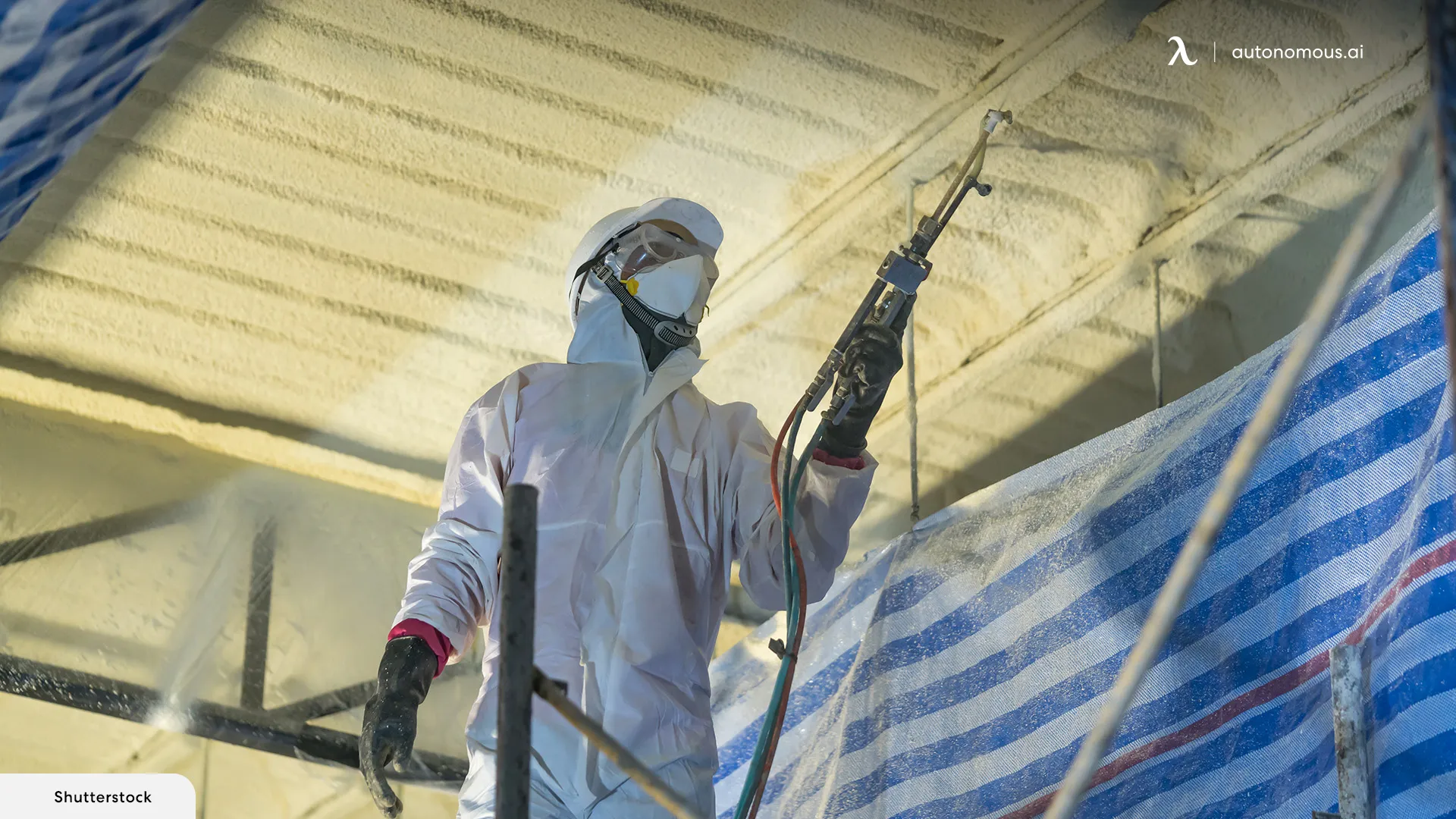
Is Spray Foam Insulation the Right Product for Your Home?
Before you buy spray foam insulation for your shed, you may want to explore a backyard pod. This tiny house in your backyard has fantastic air and sound insulation, making it perfect for use as a prefab studio or a home pod.
If you're looking for more small ADU ideas or want to know how big a tiny house is, we have a complete blog dedicated to that.
FAQs
The following are a few frequently asked questions about spray foam insulation:
How Do I Use Spray Foam Insulation in My Shed?
Here's how to use spray foam insulation:
- Wipe the surface.
- Apply the sealant without any breaks to achieve an effective seal.
- Let it dry to harden.

Is Spray Foam Insulation Safe?
Spray foam insulation is a hazardous building material that can be dangerous if improperly applied or handled.
Although it does not cause cancer, there are several health risks associated with these types of products, such as skin irritation, respiratory problems, dermatitis, and more.
It's crucial to let experienced professionals handle spray foam insulation. If your shed lacks proper ventilation, improperly applying the foam can make it too airtight, leading to further problems.
Is Spray Foam Insulation Worth It?
Spray foam insulation is a very effective way to reduce heat loss and prevent air from getting inside the house, making it an excellent insulator. It has a higher R-value than other materials, including fiberglass and organic insulation.
Although there are many spray foam insulation benefits, it's best for a home and not a shed. You may want to consider investing in a prefab ADU.
Is Spray Foam Insulation Flammable?
All types of insulation are flammable, and spray foam insulation is no exception. However, the materials are treated with flame retardants, which lowers the possibility of igniting and burning near heat sources.
How Can Homeowners Remove Spray Foam Insulation?
If you've created an unintentional sticky mess, you must immediately apply acetone to dissolve the wet foam. It's essential that you wear a mask to avoid inhaling the vapors from the material. You can also use nail polish remover if you don't have acetone.
When the spray foam insulation hardens, you will need a metal scraper, acetone or alcohol, and a cloth. Start chipping away at the rigid foam with the scraper. This can cause the material to latch onto the metal.
To remove the foam particles from the scraper, wrap the metal in a cloth with the solvent applied. Leave it for a while before brushing the scraper and rinsing it with hot water.
How Much Is Spray Foam Insulation Per Square Foot?
The construction industry uses "board feet" as the standard unit of measure when applying foam insulation. This is roughly 144 cubic inches.
According to Forbes Home, open-cell foam insulation can cost between $0.45 and $0.65 per board foot, while the closed-cell type is much more expensive, ranging between $1 and $1.50 per board foot.
Where Should Homeowners Avoid Using Spray Foam Insulation?
There are a few things to keep in mind when using spray foam insulation, and these include the following:
- High-expansion products can cause structural damage when applied to tight places in the shed, which is why homeowners need to use low-expansion foam for such spaces.
- Avoid using open-cell spray foam insulation for roofs, as it can allow moisture to permeate through it, causing the wood to rot, adversely impacting the roof's structure.
- Don't use spray foam to insulate your prefab accessory dwelling unit, as it can adversely impact the ADU interior. If the mixture gets into ADU appliances, it can become a serious fire hazard.
- Homeowners should not use foam insulation between walls and their shed's electrical box. It can breach the electrical unit, cover the wires, and jam the components.
Can You Paint Spray Foam Insulation Without a Professional?
Yes, you can install spray foam insulation without a professional. However, taking the necessary safety precautions before doing so is essential. There is also a risk of an improper installation that can lead to molding and other problems.
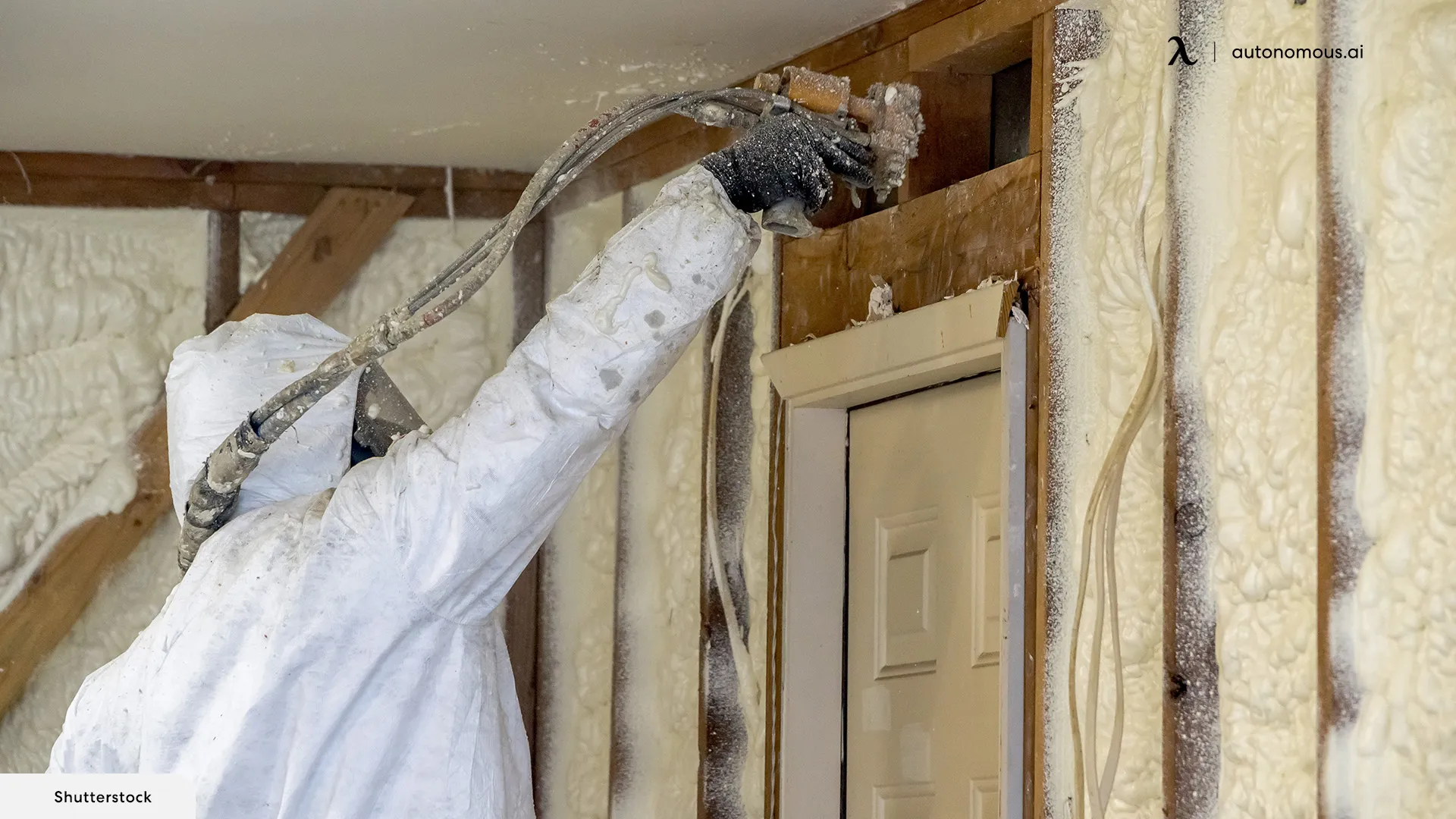
What Is Spray Foam Insulation Made of?
Spray foam insulation is made from isocyanate and polyol resin. When combined, the two chemicals react, causing it to expand and harden.
Does Spray Foam Insulation Work?
Yes, it is one of the most effective ways of insulating your home and can provide energy savings. To reap the benefits of this type of building material, it's crucial to install it properly.
How Do You Get Spray Foam Insulation Off Your Hands?
If you've got spray foam insulation on your hands, don't panic. Get a cloth and dip it into acetone or nail polish remover before gently rubbing at the foam. This will reduce the material's stickiness and prevent it from drying.
Alternatively, you can also use baby powder. Apply a generous layer onto the wet spray foam and start rubbing your hands together for 15 seconds before rinsing the material. You may have to repeat this process three to four times.
Spread the word
.svg)








